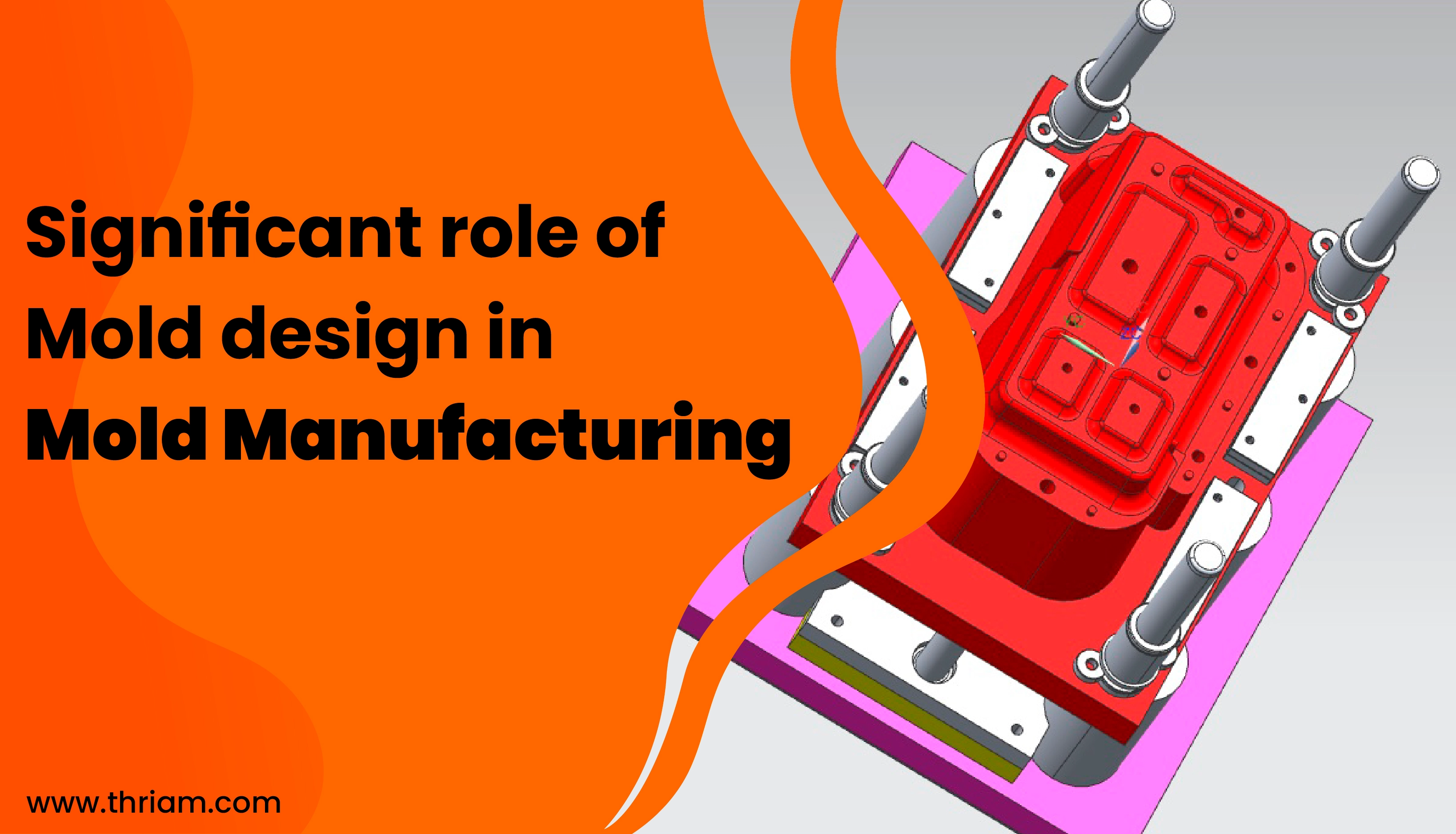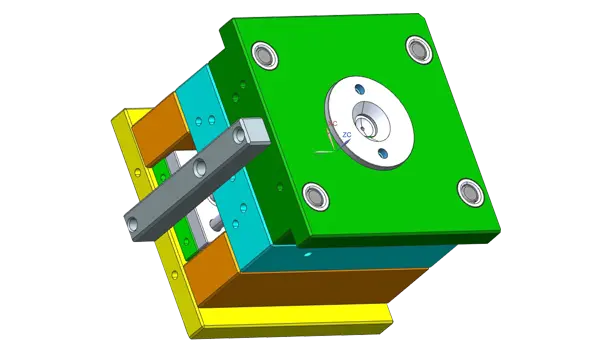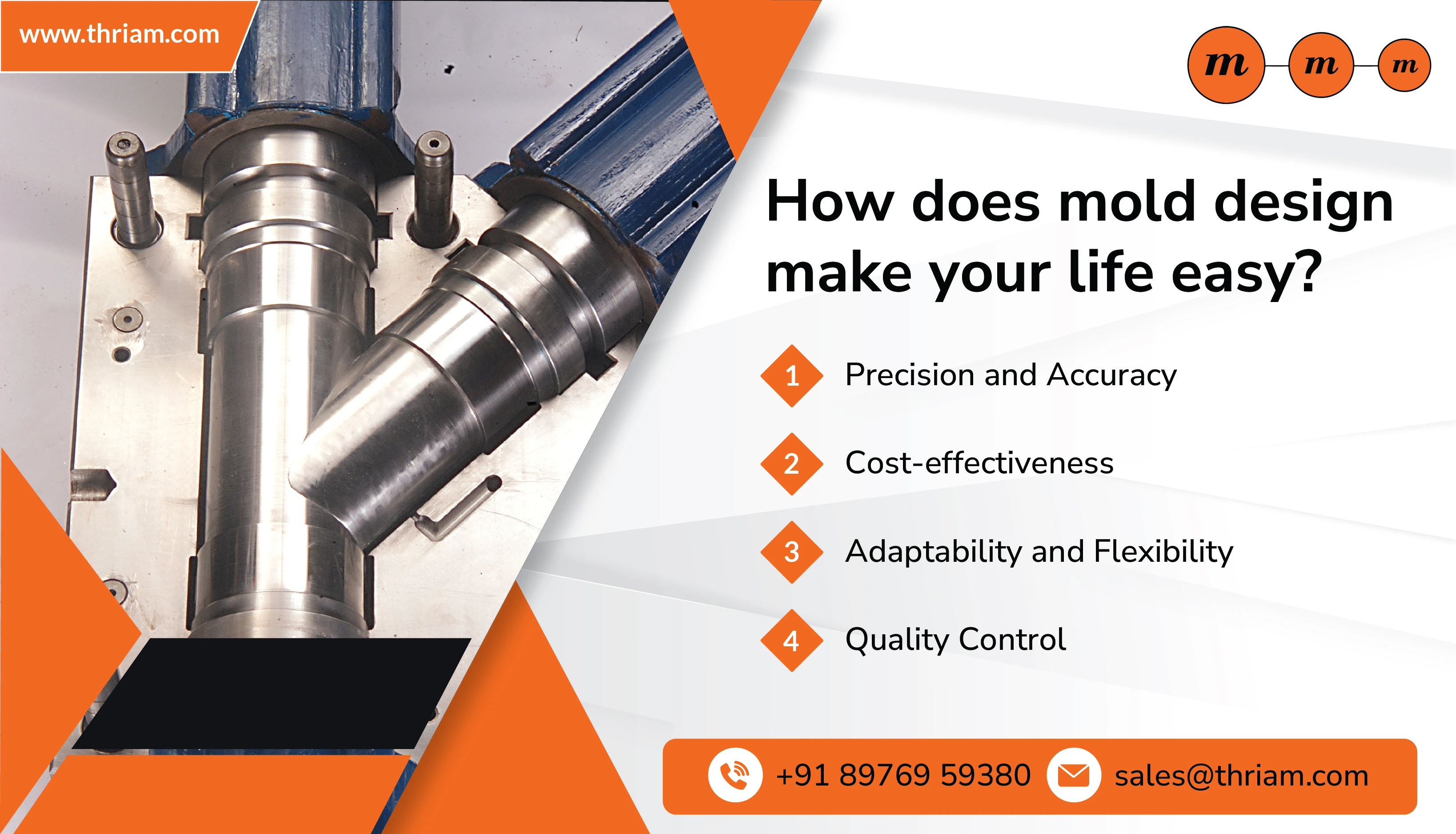What is the Importance of Mold Design in Manufacturing 2024

Manufacturing processes involve complex systems and careful planning to ensure the production of high-quality products. In this regard, mold design plays a crucial role, often acknowledged as the foundation of successful manufacturing. A well-designed mold is essential for achieving precise and cost-effective production, making it a vital component in the manufacturing process.
Role of mold design in manufacturing:

In the complex world of manufacturing, mold design plays a crucial role in ensuring the success of the production process. Mold design refers to the creation and development of molds used to shape and form products during manufacturing. These custom-built molds are made from durable materials like steel or aluminum and are designed to meet the specific requirements of the product being manufactured. The role of mold design is to provide manufacturers with the necessary tools and templates to accurately reproduce multiple identical copies of a product. A well-designed mold is the foundation of precise and cost-effective production, allowing for consistent dimensions, minimal variation, and high-quality output. It also enables manufacturers to adapt to changing market demands, maintain efficiency, and achieve optimal results in the manufacturing process.
What is Mold Design?
Mold design is an essential aspect of the manufacturing process that involves the creation and development of molds used for shaping and forming products. A mold is a hollowed-out block or container that is custom-built to meet the specific requirements of the product being manufactured. It serves as a template or tool that allows manufacturers to accurately reproduce multiple identical copies of a product.
Molds are typically made from materials such as steel or aluminum, chosen for their durability and ability to withstand high temperatures and pressures. The design of the mold is crucial as it directly impacts the quality, precision, and efficiency of the manufacturing process.
The mold design considers various factors, including the size, shape, material properties, and production volume of the product. It involves intricate engineering and careful planning to determine the optimal layout, dimensions, and features of the mold.
A well-designed mold is characterized by several key elements. These include the cavities and cores, which define the shape and size of the product being manufactured. The gating system controls the flow of molten material or plastic into the mold. Cooling channels are integrated into the mold to regulate the temperature during the manufacturing process. Finally, the ejection system allows for the easy removal of the finished product from the mold. By incorporating these considerations into the design, manufacturers can achieve consistent dimensions and minimize variations, especially in industries with tight tolerances.
Materials commonly used in mold construction:
When it comes to mold construction, manufacturers commonly use materials such as steel and aluminum for their durability and suitability for high-temperature and high-pressure conditions. Steel molds are widely preferred for their excellent strength, toughness, and long lifespan. They are particularly suitable for producing large quantities of products and can withstand repeated use without significant wear or deformation. Aluminum molds, on the other hand, offer advantages such as lighter weight, faster heat transfer, and greater ease of machining. They are often chosen for low to medium production volumes or when rapid prototyping is required. Both steel and aluminum molds are highly durable and ensure the precision and accuracy necessary for successful manufacturing processes.
How does mold design make your life easy?

Precision and Accuracy
One of the primary reasons mold design is crucial is its impact on precision and accuracy in manufacturing. A well-designed mold ensures that the final product is produced with consistent dimensions and minimal variation. This level of precision is vital, especially in industries where tight tolerances are required, such as automotive or aerospace.
The design elements of the mold, including the shape of cavities and cores, the material flow, gating system, and cooling channels, all contribute to achieving the desired precision and accuracy. By carefully considering these design aspects, manufacturers can eliminate defects and maintain product consistency throughout the production process.
Cost-effectiveness
Mold design also plays a significant role in cost-effectiveness during the manufacturing process. The initial investment in a well-designed mold may seem high, but it ultimately leads to long-term cost savings. A good mold design ensures efficient production with minimal wastage, reducing material and labor costs.
Moreover, a well-designed mold enhances the production cycle, allowing for faster cycle times and increased output. This means that more products can be manufactured in a shorter time, resulting in higher productivity and improved profitability.
Adaptability and Flexibility
Innovation and customer demands drive the need for adaptability and flexibility in manufacturing. Mold design plays a crucial role in enabling manufacturers to respond to changing market demands efficiently. A well-designed mold offers the advantage of being easily modified or adapted to accommodate design changes or product variations.
With the ability to modify the design of the mold, manufacturers can quickly introduce new product features, incorporate design improvements, or adapt to changes in market trends. This flexibility reduces lead times and allows manufacturers to stay competitive in dynamic market environments.
Quality Control
Quality control is a paramount consideration in manufacturing processes. Mold design plays a critical role in ensuring consistent product quality. By carefully designing the mold, manufacturers can control and optimize factors such as material flow, cooling rates, and part ejection, resulting in uniformity and excellent surface finish of the final product.
Additionally, a well-designed mold allows for efficient inspection and testing during the manufacturing process. Mold design can incorporate features that facilitate easy access to critical areas of the product for inspection, ensuring that quality control measures are effectively implemented.
Conclusion
In conclusion, mold design plays a vital role in the manufacturing process by enabling precision, cost-effectiveness, adaptability, and quality control. It serves as the backbone of successful production, ensuring the creation of high-quality products in an efficient and timely manner.
Manufacturers must recognize the importance of investing in well-designed molds and collaborating closely with mold design experts to maximize efficiency.
Bonus content
Types of molds
Injection Mold: Injection molds are extensively used in the injection molding process to produce a wide range of plastic products. These molds consist of two halves, known as the core and cavity, which are brought together to create a hollow space where molten plastic is injected under high pressure. The plastic then cools and solidifies, taking the shape of the mold cavity. Injection molds are versatile and can produce complex shapes with high precision and efficiency.
Compression Mold: Compression molds are primarily used for materials such as rubber or thermosetting plastics. This type of mold involves placing the material into an open cavity and applying heat and pressure to shape and cure it. Once the material has hardened and cooled, it is removed from the mold. Compression molds are suitable for producing products with intricate details and are commonly used in industries like automotive, aerospace, and electrical.
Transfer Mold: Transfer molds are utilized in transfer molding, a process that combines elements of compression and injection molding. In this process, the material is preheated and placed into a chamber, referred to as a pot. The mold is then closed, and pressure is applied to force the material to flow into cavities and mold the product. Transfer molds are commonly used for molding thermosetting plastics and rubber, and they enable the production of intricate parts with high dimensional accuracy.



